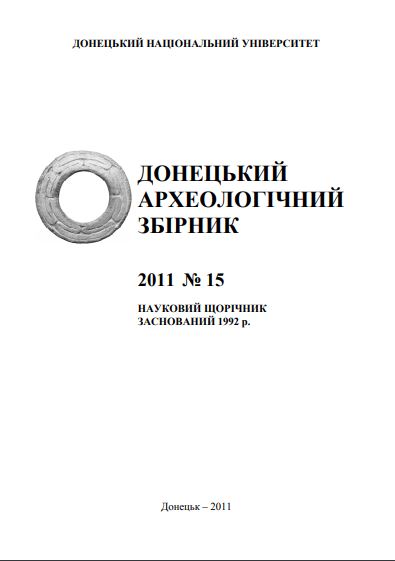Experimental and traceological research of the metal production tools: history and perspectives.
Keywords:
experimental and traceological analyses, metal production, Kartamysh archaeological district, Berezhnivka-Mayivka Timber-grave culture, Timber-grave cultural community, Bronze Age, paleoreconstructionAbstract
In the context of studying metal production the functional analysis of tools considered to be one of the topical directions in recent years. There were several consecutive stages in the history of research of metal production tools: from the interpretation of technology and traces on individual items, allocation of functional groups of tools connected with all the production cycles to reaching the level of the reconstruction process of metal production. The first functional studies of mining tools were carried out by S.A. Semenov on archaeological materials from Neolithic site in the Far East. In the 60-80's of the twentieth century application of functional analysis in the study of multiple archaeological collections of Neolithic - Bronze Age starts. This achievement has allowed reaching the level of Paleolithic economic reconstructions within cultures and cultural-historical communities. Systematic complex researches have been carried out since 80's of the twentieth century in various territories of Eurasia. They are based on traceological and experimental methods. Practice of comparing individual functional types of tools from different mining-metallurgical sites in Europe becomes widespread.
Great increase of metal production sources of Berezhnovka-Mayevka Timber-grave culture is observed in connection with investigation of Kartamysh archaeological district sites of the Late Bronze Age in Donbass. These sites represent about 900 instruments of metal production. The most numerous are stone and bone ones. The observation of traces related to mining, ore processing and metal-working on these tools has allowed identifying the different stages of metal production. Experimental researches have been used to test hypothesis of the interpretation of traceological analysis. The functional analysis of this collection reveals important aspects of the ancient technological and social work organization. Finally, comparison of tools collections from different mining-metallurgical sites could provide a general view of the metal production process in prehistoric Eurasia and make a significant contribution to the problem of its reconstruction.

